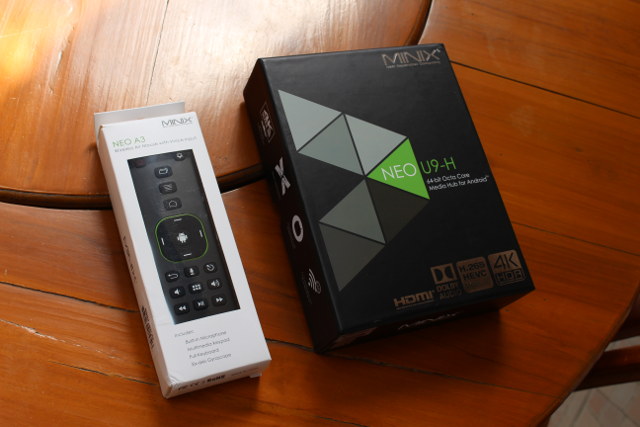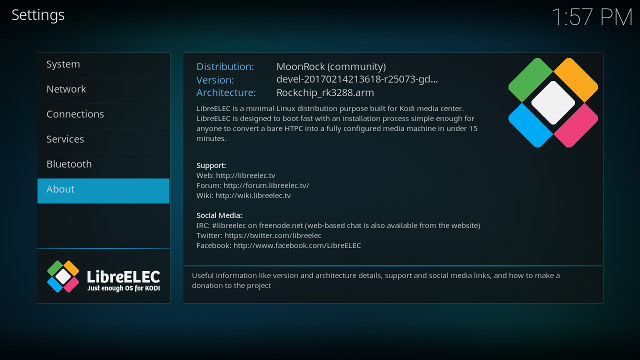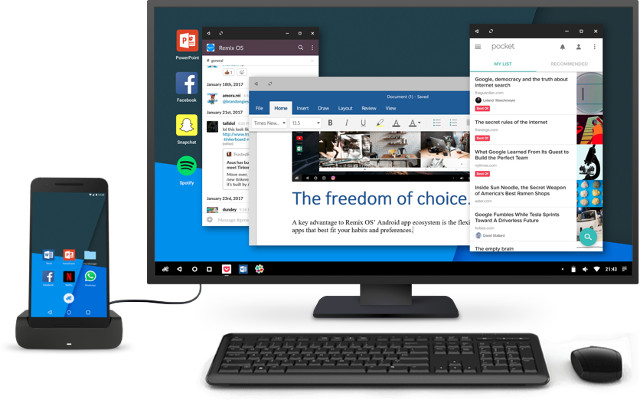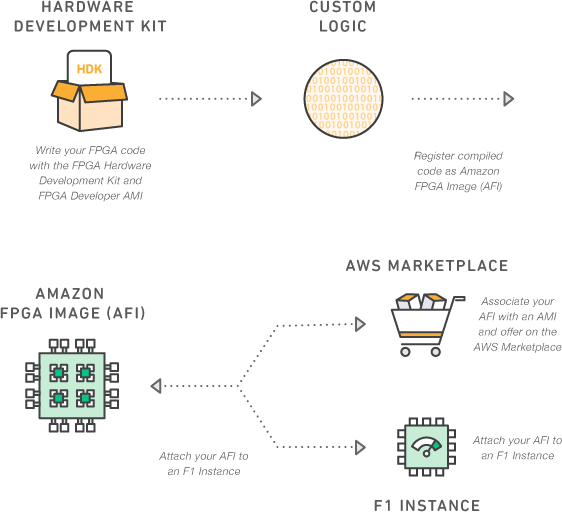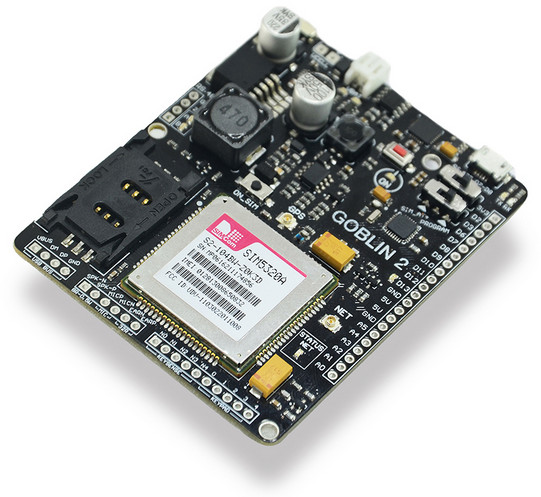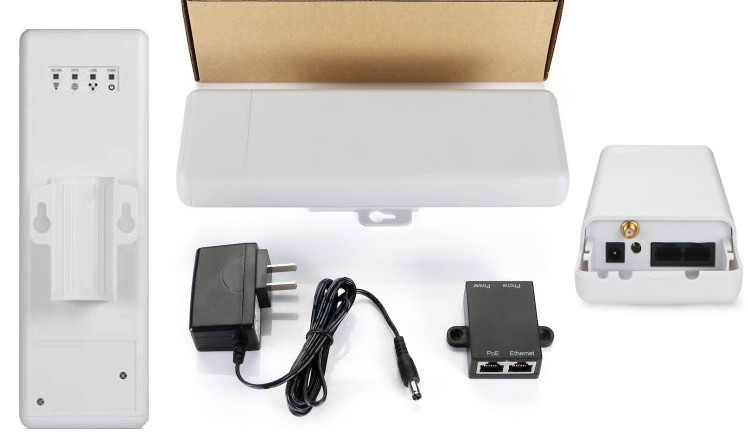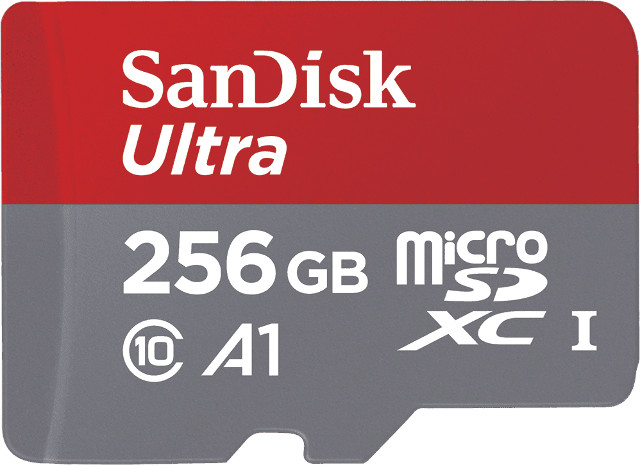MINIX showcased MINIX NEO U9-H TV box at IFA 2016 last year, but was not ready to launch the product or provide the full details yet. The company has now completed development of their Amlogic S912-H octa-core TV box, and sent a review sample for evaluation on CNX Software together with their latest MINIX A3 air mouse with voice command function. I’ll start by listing the specifications of the TV box, take some pictures, and tear it apart to check out how it’s been designed in the first part of the review, and test the firmware in the second part which I intend to post in a few days. MINIX NEO U9-H Media Hub specifications One of the main difference over other Amlogic S912, is the -H suffix which means Dolby and DTS licenses have been paid for so all apps will handle those audio formats: SoC – Amlogic S912-H […]
LibreELEC is Now Running on Ugoos UT3+ (Rockchip RK3288) TV Box
Rockchip RK3288 may have launched over two years ago, but the quad core 32-bit processor is still much more powerful than many 64-bit platforms on the market, and ASUS selected the processor for their upcoming – and not officially launched – Tinker Board. The processor was found in several Android TV boxes, but people also installed Linux on the devices, and ported Kodi 14.2 Linux to RK3288 with hardware video decoding back in 2015. The news here is that Omegamoon has recently started working on LibreELEC 8.0 port for RK3288 with a Linux 4.4 kernel, and tested it on Ugoos UT3+ TV box. Full HD movie playback is said to be smooth, Ethernet, and sound work, but WiFi still needs to be worked on. Omegamoon has released an update.img firmware which can be flashed with upgrade_tool in Linux, or AndroidTool in Windows, replaces whatever operating system you have on the […]
Remix Singularity to Bring Remix OS Desktop Optimized Operating System to Android Smartphones
Android is great to consume content, but is a real pain to create content, as operation like copy/paste and multi-tasking you take for granted in desktop OS like Ubuntu or Windows are not well supported in Android. But Jide Technology saw an opportunity and many users are familiar with Android on their phones and tablets, and some on Android TV boxes, so they created Remix OS, based on Android, but with desktop optimization such as better multi-tasking, multi-window support, improved mouse and keyboard integration and so on. They started with a tablet, and then also worked on ARM based Android TV boxes and laptops, as well as support for x86 computers. The company has now unveiled Remix Singularity which aims to bring Remix OS to smartphones in a similar manner to Windows Continuum or Ubuntu Convergence. But beside just mobile and desktop (PC) modes, Remix Singularity will also allow to […]
RetroArch Game Emulator Can Now Run on Nintendo NES Classic Mini and Famicom Mini
Nintendo NES Classic Mini is a smaller replica of Nintendo NES with an HDMI output, and powered by an Allwinner R16 SoC. Nintendo has released a model with the same or similar hardware, but a different case for the Japanese market called Famicom Mini. Those two consoles are pre-loaded with about 30 games, and in theory you can’t add any more games. But as everything with an Allwinner processor, it can be hacked to match your needs, and people have already managed to add games using the micro USB connection and Hakchi2 script. What’s new is that you can now run RetroArch on the consoles, and probably on other Allwinner R16 platform such as the upcoming Banana Pi BPI-M2 Magic board, provided it’s connected to an LCD display. To achieve that, first you’ll need to install the latest Hakchi 2.12 tool with the procedure, clearly explained (with an older version) […]
Amazon EC2 F1 Instances Put Xilinx Virtex Ultrascale+ FPGA Boards into the Cloud
We’ve covered several board and modules based on Xilinx Zynq Ultrascale+ MPSoC such as the AXIOM Board and Trenz TE0808 SoM, both featuring ZU9EG MPSoC, with systems selling for several thousands dollars. But I’ve been informed you may not need to purchase a board to use Virtex UltraScale+ FPGAs, which are different from Zynq UltraScale+ since they lack the ARM CPU & GPU and normally feature a more capable FPGA, as last November, Amazon launched a developer preview of F1 instances giving access to this type of hardware from their cloud. That’s the FPGA hardware you’ll be able to access from one F1 instance: Xilinx UltraScale+ VU9P manufactured using a 16 nm process. 64 GB of ECC-protected memory on a 288-bit wide bus (four DDR4 channels). Dedicated PCIe x16 interface to the CPU. Approximately 2.5 million logic elements. Approximately 6,800 Digital Signal Processing (DSP) engines. Virtual JTAG interface for debugging. […]
Goblin 2 Arduino Compatible IoT Board Includes SIM5320A 3G & GPS Module
Veracruz, Mexico based Verse Technology has recently launched Goblin 2, an Arduino compatible IoT development, based on Atmel/Microchip ATmega328P MCU, featuring a built-in SIM5320A 3G and GPS module, supporting RS-485 communication, and providing 3.3/5 and 24V power output. Goblin 2 board specifications: MCU – Microchip Atmel ATMega328P AVR MCU @ 16 MHz with 1KB EEPROM, 32kB Flash, 2kB SRAM Wireless connectivity via Simcom SIM5320A USB 2.0 module: Dual-Band UMTS/HSDPA 900/2100MHz Quad-Band GSM/GPRS/EDGE 850/900/1800/1900MHz 1x SIM card slot High accuracy 16 channel GPS Expansion I/Os 6x ADC input with 10 bits resolution 10x digital in/out including 5 PWM RS-485 protocol @ 10Mbps for up to 256 nodes on the bus Header to Keypad, microphone and speaker for SIM I/O Misc – 8 LEDs for power, battery, networking, RS485, UART, plus one user LED; Power switch, RS-485 /GPIO switch, program / SIM AT+ switch Power Supply – 5V via micro USB port, […]
Dragino OLG01 Outdoor Single Channel LoRa Gateway Runs OpenWrt, Supports Passive PoE
Dragino Technology, a Shenzhen based startup focusing on the Internet of Things, had already designed LoRa shields & Hats for Arduino & Raspberry Pi boards which can be useful for LoRa nodes, but the company has now launched Dragino OLG01 LoRa gateway running OpenWrt that communicates with nodes over LoRa, and to the cloud using WiFi, Ethernet, or 3G/4G. Dragino OLG01 specifications: WiSoC – Atheros AR9331 MIPS processor @ 400MHz System Memory – 64MB RAM Storage – 16MB flash MCU – Atmel ATMega328P AVR MCU with 32KB flash, 2KB SRAM Connectivity 802.11 b/g/n WiFi with antenna 2x 10/100M Ethernet with support for passive PoE Optional 3G/4G module connected to internal USB socket (TBC) Semtech SX1276/78 LoRa wireless module + SMA connector (antenna not provided) up to 5~10 km range USB – 1x USB 2.0 host port Power Supply – 12V DC power jack or PoE Three models are offered with […]
SD Specifications 5.1 to Introduce App Performance Class (for Random I/O) & Logo
SD cards used to store media data only, for example photos and videos in your camera or smartphone, but with the introduction of “Adoptable Storage” in Android 6.0 you can now run apps directly on a micro SD card, and many development boards rely on (micro) SD card to run the full operating system. The difference is important, as with media storage, the raw sequential read and write speeds are the most important, as large files are created and accessed, but for apps and operating systems many small read and write operations such as databases access take place on the card, so random IO performance becomes much more important. So far, the SD card specifications would only report sequential performance with different classes, and for example for are often recommended to use “Class 10” SD cards on Raspberry Pi, which does not clearly indicates the random IO performance. SD Specifications […]


